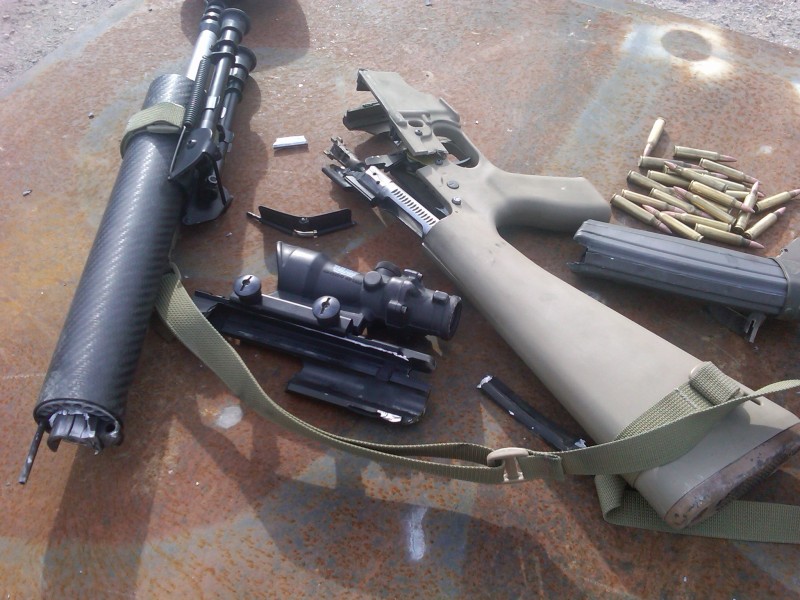First, while I have never seen a catastrophic chamber failure, I have seen the most common over pressure problem with 5.56 in .a .223 chamber, primer loss. Having small pieces of metal drop into and interact with your trigger group may be an inconvenience on the range, that could have dire consequences when you are relying on the rifle for self defense purposes.JSThane wrote:Getting into the minutiae here, but I'm curious on a couple things with reference to this, specifically how it is dangerous to fire 5.56 in a .223 chamber. I'm aware I'm ranging into the pedantic here, but looking at my loading manuals, the external dimensions of both cartridges are, as we all know, identical. Therefore, it cannot be a difference in the cartridge itself (not yet getting into case wall thickness or pressure levels, more later).TheDude wrote:Not sure why you would say that. Most ARs are 5.56 chambered which will fire both rounds. Some rifles are chambered for .223 wylde but they should say .223 wylde on the barrel. If it just says .223 then it is dangerous to shoot 5.56 in the rifle.carrydave wrote:keep in mind that basically every rifle has a wylde (hybrid) chamber nowadays.
[ Image ]
Uploaded with ImageShack.us
I thought, "Well, maybe it's because the 5.56 has a longer throat and Overall Length, so it's an overpressure from hitting the rifling lands," except COL for the 5.56 is listed as .01" -shorter- than the .223, so that can't be it. (Info from Hornady manual, 5th edition)
So, overall velocities and pressures must be the culprit. The Hornady manual doesn't list data for identical bullets across the two cartridges, stopping at 60 grains for .223, and starting at 68 for 5.56. Unfortunately, it also fails to list pressures, so can't do a comparison there. Lee and Lyman both list pressure, but neither makes any distinction between the two. Probably the most complete manual I own, the Speer manual, mentions the 5.56 merely in passing as another name for the .223. No manual lists any pressure difference between the two, nor do they advise against firing either one in the other. In fact, Hornady lists loads for several of its bullets that are right up there, velocity-wise, with the above-mentioned 5.56 loads. The 5.56 is -slightly- hotter, but absent any actual pressure data to indicate otherwise, I don't see any real practical difference.
Given that barrels are proof-tested with deliberately grossly over-loaded rounds, a slight increase between 5.56 and .223 seems neglible. I could see how a steady diet of the hotter ammo, over a period of several years, could prematurely wear certain parts in the gun, but I fail to see how using 5.56 in a .223 is dangerous.
Thus, could you provide examples and references showing me I'm wrong? Not meaning any offense, but this brings back memories of people telling me not to fire .308 in my 7.62 Mauser, because it was dangerous, yet AFAIK, there was never a single example of a 7.62 Mauser blowing up due to the slightly hotter ammunition, only a "this might maybe could possibly stand a slight chance of happening, so it's dangerous to even think of it."
My second observation has more to do with my concern with the general manufacturing environment that we've experienced for the last 6 months, and that exhibited prior to and shortly after the 2008 election cycle.
I am reasonably certain that gunmakers who have a solid reputation for precision/quality processes didn't lay those aside to increase production, which is why their products are virtually nonexistent in the stocking dealer market.
I am equally certain that other gunmakers of lesser reputation have increased production to take advantage of recent market drivers to improve their sales/profitability. How were they able to do this? New hiring? Longer hours? Increased unit counts on tools and dies? New material suppliers? Reduced inspections?
While any one or two of these factors may not effect the safety of the firearm, the combination of a lesser quality firearm WITH overpressure from an equally rushed to production cartridge of either dimension gives me the willies.

